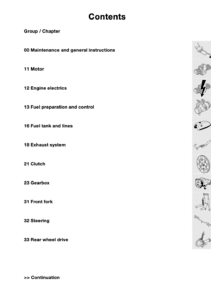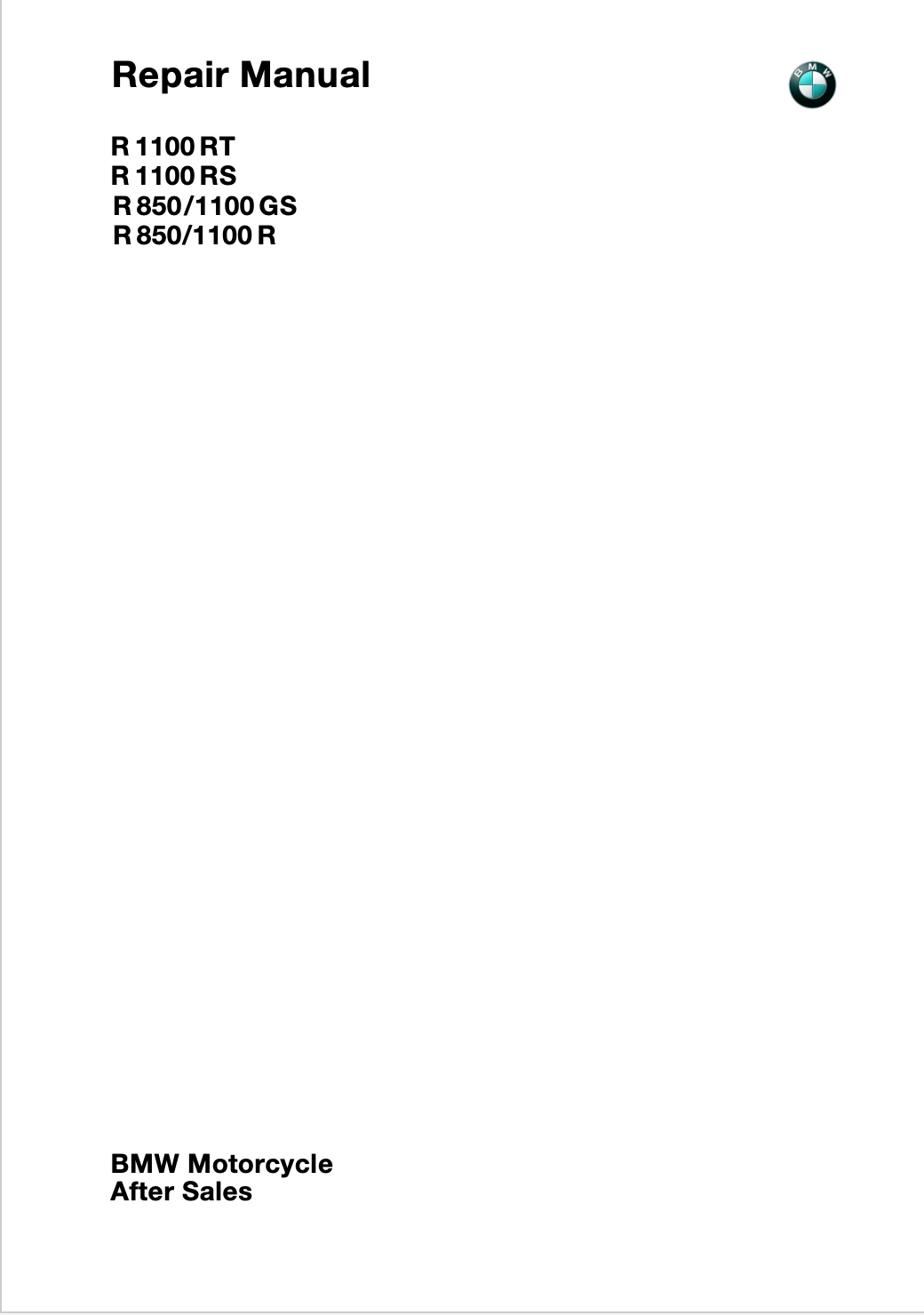Complete PDF version of the Service Manual for the BMW R1100 RT/RS/GS/R R850 GS/R. A MUST for every R850/R1100 owner.
Models covered by this manual: 1993 to 2001
Number of pages: 464 pages
Table of contents:

This PDF repair manual can be downloaded right after the payment process in complete, on the device of your choice.
We do not offer printed manuals, for the following reasons:
- it is more eco-friendly to use a digital version
- your manual never gets dirty or greasy
- you can always choose to print the specific page(s) you need to work on your bike
- you receive your manual immediately after payment
- it is searchable

BMW R1100RT
The BMW R1100RT is a touring bike powered by a horizontally opposed twin-cylinder boxer engine. It was made in the BMW Berlin facility in Spandau from 1996 to 2001, with other sister models of comparable design, including the R1100R, R1100GS, and R1100RS, which had almost identical engines but various engine tunes, trim levels, and chassis characteristics.
The R1100RT was introduced in 1996 as the R100RT’s replacement. Aside from considerable alterations to the whole fairing, the engine output was dramatically raised from 44 to 66 kW (60 to 90 horsepower), and the capacity was increased from 971 cc to 1085 cc. The bore is 99 mm, the stroke is 70.5 mm, and the compression ratio is 10.7:1. The top speed is 211 km/h, while the acceleration time from 0 to 100 km/h is 3.9 seconds.
The bike includes an anti-lock braking system as well as a controlled three-way catalytic converter. The chassis is made up of three parts: a front and rear frame, as well as a co-supporting ligands motor-gear unit. A Telelever swingarm formed the front suspension, while a Paralever swingarm created the rear suspension.
The gasoline tank has a capacity of 25.2 liters (6.6 gallons) with a reserve capacity of 6 liters (1.5 gallons). At 86 km/h (55mph), the average fuel consumption is 3.9 liters per 100 km (60mpg), or 4.7 liters (50mpg) at 120 km/h (75mph). The manufacturer suggests using gasoline with a knock resistance of at least 95 RON / 91 octane. The front tyres are 120/70 ZR 17 and the rears are 160/60 ZR 18. In running order, the bike weighs 285 kg (628lbs) and has a maximum extra payload of 205 kg (452 lb).
The R1100RT was replaced by the R1150RT in 2001. The Pan-European, Honda Gold Wing, and Triumph Trophy 1200 are touring bikes with identical equipment and powertrain characteristics.
BMW GS
From 1980, when the R80G/S was introduced, until the current day, the BMW GS line of one-purpose off-road/on-road BMW motorcycles has been produced. Gelände/Straße (German for off-road/road) or Gelände Sport are both abbreviated as GS. The longer travel suspension, upright riding stance, and bigger front wheels – generally 19 to 21 inch — separate GS bikes from other BMW models. The 500,000th GS, an R1200GS model, was made on May 2009. The GS was offered with a variety of engines, including single-cylinder, twin-cylinder water-cooled, and twin-cylinder air- (“Airheads”) and air/oil-cooled engines (“Oilheads” and “Hexheads”).
Oilheads
The launch of the next generation R-259 or oilhead engine in 1995 marked BMW’s debut into current adventure models, with a series of higher displacement models including the R850GS, R1100GS, R1150GS, and R1200GS. Due in part to the usage of four valve heads, later versions include electronic engine control, ABS brakes, twin spark plugs, and greater power than airhead models. The latest R1200GS, often known as a hexhead because to the redesigned cylinder head shape, is 30 kg (66 lb) lighter and has 105 horsepower (78 kW) more power than the R1150GS.
The R1150GS and R1200GS Adventure models include a larger fuel tank, lower gearing, better suspension, and optional offroad tires to make them more appropriate for long off-road journeys with a substantial load of gear and supplies. When compared to bikes with inline-4 or V-twin engines, the horizontally opposed two-cylinder “boxer” engine has a lower center of gravity. This greatly improves the ability of these supercharged motorcycles to traverse on dirt roads and trails. The torque distribution over a wide RPM range, along with the relatively large power pulses inherent in a two-cylinder long-stroke engine, gives steady and predictable traction over loose ground.
All oilhead GS types, like the airheads, are shaft driven. However, the front suspension was altered from conventional forks to the Telelever, designed by the British firm Saxon Motodd, which employs a control arm, referred to as an A-arm by BMW, to reduce dip during braking.
Source: Wikipedia

